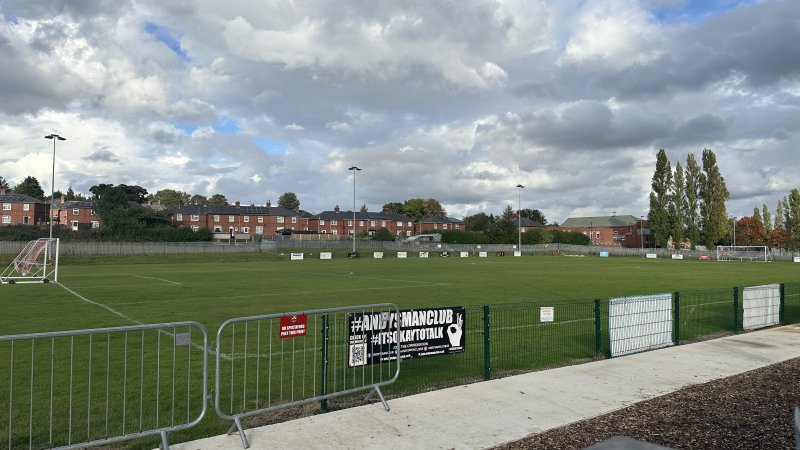Some of the most notorious cases of women being tried for wilful murder in English history involve moral beliefs and ideologies of power that are impossible to accept today. Something profound in the human mind and in the sense of moral community feels an extraordinary revulsion at the thought of a woman taking a life. Until 1827, a woman who took the life of her husband was committing, not murder, but petty treason. Until 1790, this earned a punishment of burning at the stake rather than hanging. When a woman was hanged for ‘husband murder’, even as late as 1825, the ritual in the official execution was very different from that of a male killer.
Stephen Wade’s book Yorkshire’s Murderous Women, covers outlandish tales of witchcraft and the death of Robin Hood to the harrowing stories of child murders, poisonings and the hiring of assassins.
Below we include an extract from Stephen’s book: Yorkshire’s Murderous Women. Available directly via the publisher Pen & Sword Books here.
Extract:
The Wombwell Murderers 1903
‘Give it to him Johnny, punch him to death!’
In John Ellis’s memoirs, Diary of a Hangman, he included a chapter called ‘How I Hanged a Woman.’ Here, he compares the case of Edith Thopson to that of Barnsley Killer Emily Swann:
Twice before I had been concerned with the execution of a woman. The first was in 1903, when I was assistant hangman at the double execution of John Gallagher and Emily Swann, at Armley Gaol, Leeds, for the brutal murder of Mrs Swann’s husband. The other was twenty years later when Mrs Sarsh Newell paid the penalty in Duke Street prison, Glasgow, for killing a 12-year-old newsboy… Both these women were coarse and rather vulgar, very different from Edith Thompson.
Ellis had been appointed as an assistant in 1901 and was tutored by the notorious William Billington. He had a tough initiation but it is interesting that he makes no more mention of Emily Swann, despite the fact that he was only learning the trade and was clearly very nervous when he had to watch Billington hang Swann and Gallagher just after Christmas in 1903.
Instead, he chooses to focus on an execution in Newcastle involving a young murderer called Miller. When he does choose to write about the horrendous experience of hanging a woman, at the beginning of his book (where he wants the maximum impact), he chooses Thompson, someone more overtly representative of ‘feminine’ character and lifestyle.
All this tells us a great deal about Emily Swann. Ellis returns to the case later in his book, and his account of the crime, the woman’s character and her dying is heart-rending. Her story is easily reduced to elemental and basic emotional forces: a small woman who was physically abused by her husband who then takes a lover and finds happiness, but the violence of her husband continues. Such a tale is bound to end in confrontation and a retribution, and so indeed it was.
But this paragraph only gives the essence, almost like a folk tale. What we need to do to understand the case is to start with the Swanns themselves. They lived in George Square, Wombwell, and they were in the habit of taking in lodgers. When John Gallagher arrived, he and Emily soon became fond of each other and an affair began.
When William Swann found out he reacted by throwing Gallagher out. But the lovers continued to see each other. On 5 June 1903, Gallagher had come back to visit Emily, so obviously there was friction, and Swann and his usual truculent self. Gallagher, small though he was, made it clear that if Swann harmed Emily again, he would come looking for him.
That happened sooner than any of them must have thought. In fact the very next day the lovers met in the home of a Mrs Ward and after they had talked a while, Emily went home. But soon she was back, and the first act of the tragedy was to begin. She was badly bruised and had black eyes. As soon as she said, ‘See what our Bill has done!’ It was the trigger for Gallagher to act. He left, swearing to punish the husband for that he had done.
From that point things got out of hand. Though Gallagher was only slight and lightly built he was handy with his fists and a titanic struggle followed in the Swann house. The fight was so loud and public that neighbours heard and saw things that would later be very important evidence. The most striking statement overheard was Emily shouting: ‘Give it to him Johnny, punch him to death!’
When the first confrontation had petered out, Gallagher returned to Mrs Ward’s house and started to say that he had broken some of Swann’s ribs. He said that he would ‘go and give him something for himself for that’. This kind of aggression has been going on for some time, and this day was going to be the end of it. Gallagher said that he had ‘busted four ribs and that he would go bust some more’. There were a number of witnesses, naturally, to all this trouble.
For a while since leaving the Swanns, Gallagher has been planning to go to Bradford, and on this day was heard to say in Mrs Ward’s home: ‘I’ll finish him off before I go to Bradford.’ There was a clear intention to kill in that statement, and he also was heard to say: ‘I’ll murder the pig before morning. If he can’t kick a man he shan’t kick a woman!’ The fight went on in George Square and again Emily’s voice was heard saying: ‘Give it to him Johnny.’
The end of this battle indoors was that the lovers emerged from her home, hand in hand, and a bystander said that they stood ‘with every sign of affection’. There had been over ten minutes of fighting and screaming. Over the years, Emily had often been beaten by her husband, and that moment when she and her lover came out of the door was surely a moment of freedom for her, whatever the circumstances. The circumstances were that in the house behind them, William Swann lay dead.
It didn’t take long for the police to be called and to be on their way, but Gallagher escaped and took to the open road, leaving Emily to face the music. She was arrested but Gallagher was on the loose for months, eventually being found in Middlesbrough.
The two defendants stood together in Leeds on 9 December 1903 and they stood before Mr Justice Darling, a man who had been involved in the trial of Oscar Wilde and who was to try, only a few weeks after this, the infamous ‘baby farmers’ Dachs and Walters. The only flimsy shred of an argument in favour of Gallagher was that he had been drinking on the day he killed Swann and, of course, that his motives were a reprisal, a strong urge to administer some ‘justice’ of his own. In the events of that day, inside the home, there had undoubtedly been some incitement to kill, and Darling knew this. He said to Emily: ‘As for the woman, it is my duty to tell you that one does not commit murder only with one’s hands. If one person instigates another to commit murder, and that person does it, the instigator is also guilty of murder.’
It took only half an hour for the jury to find both of them guilty of wilful murder. But there was a strange twist to this tale, because there was a vital piece of evidence which Darling did not mention before the jury retired. It turned out that Emily’s part in the killing was far more than incitement. Gallagher had said, after being arrested, that Emily had used a poker to hit her husband with and that Gallagher did not touch the dead man.
Did this mean that Emily hit her husband after he was dead? All that mattered was that Justice Darling believed her to have been actively involved in the killing of William Swann.
The fact that the verdict was decided without a report of what Gallagher had said about the poker has to say something significant about the feeling concerning Emily’s state of mind at the time. After all, people had heard her say that Johnny should kill her husband, and that is all that was required to convince the twelve good men and true in Leeds that day.
But there is another perspective on Emily Swann: one of understanding and compassion and, paradoxically, this comes substantially from the man who hanged her: John Ellis. The bare facts of Emily’s fate were given in The Times on 29 December1903:
The Wombwell Murderers - The Home Secretary has declined to interfere in the case of the Wombwell murderers, Emily Swann and John Gallagher, who were found guilty at Leeds Assizes of the wilful murder of the female prisoner’s husband. They will be executed at 9 o’clock this morning.
But Ellis is the man who saw the woman inside that supposed murderous beast who broke the laws of nature. He saw a forty-two-year-old woman, ‘... a little, stumpy, round-faced woman, only 4 feet 10 inches tall and 122 lbs in weight. She was the first condemned woman I had ever seen and, frankly, I didn’t think the authorities would allow her to go to the scaffold.’ He was wrong, and it affected him greatly.
The couple were told that the reprieve had been dismissed, and from that moment, Ellis saw in Emily Swann a woman who was emotionally wrecked. He said: ‘When she was told of the Home Office decision it absolutely staggered her, and she wore a look of utter misery when I peeped in at her that evening.’
The reality Ellis saw as a tiny woman, one who’d had to suffer violence for years, had been beaten, shouted at, despised and humiliated and now, after finding that there had been an opportunity for sheer animal revenge, a momentary release of hatred, as a mad dog would turn on its master after being kicked and beaten, she had become a small, weak woman once more, being asked to accept the reality that someone was going to hang her, inside a miserable gaol.
Ellis’s tone is one of gentleness and, as we read in his memoir, we notice how observant he was - how he saw the wardresses becoming friendly with their female charge and how both prisoners showed ‘religious penitence’. The hangman’s account of the deaths of the two lovers is painful reading. Gallagher was first to the scaffold after being pinioned and then a white hood was placed over his head, when Emily came to stand behind him he didn’t see her. She simply said: ‘Good morning John.’ He was shocked and replied ; ‘Good morning, love.’
As the rope was put around Emily’s neck she said: ‘Goodbye. God bless you!’ According to Ellis, she had gone from being a squirming emotional wreck on the floor of her cell to someone quite stoical, and a glass of brandy was all it took. Her two wardresses had broken down and were very upset, just as Emily bucked up and gave a smile of acceptance of her situation.
The entire story, through modern eyes, provides a mix that is difficult to accept: here is a classic, almost elemental ménage à trois, with all the concomitant enmity and jealousy, with a last act to equal a grand tragedy, except that it was finally also sordid and demeaning, in that the killing was pointless and brutal, in spite of the husband’s former cruelty. Central to the process of the story, all the way through, was the fact that many public statements were made, almost to the extent of a running commentary on the macabre events of that horrendously determined killing. It was as if the killer, the man directly responsible, was working very hard to show how effectively he was dispensing some kind of ‘natural justice’ in beating to death the wife-beater.





























